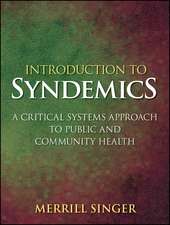Psychological and Behavioral Aspects of Physical Disability: A Manual for Health Practitioners
Autor James E. Lindemannen Limba Engleză Paperback – 29 mar 2012
Preț: 397.38 lei
Nou
Puncte Express: 596
Preț estimativ în valută:
76.04€ • 79.39$ • 62.93£
76.04€ • 79.39$ • 62.93£
Carte tipărită la comandă
Livrare economică 05-19 aprilie
Preluare comenzi: 021 569.72.76
Specificații
ISBN-13: 9781468440065
ISBN-10: 1468440063
Pagini: 456
Ilustrații: 452 p. 2 illus.
Dimensiuni: 155 x 235 x 24 mm
Greutate: 0.64 kg
Ediția:Softcover reprint of the original 1st ed. 1981
Editura: Springer Us
Colecția Springer
Locul publicării:New York, NY, United States
ISBN-10: 1468440063
Pagini: 456
Ilustrații: 452 p. 2 illus.
Dimensiuni: 155 x 235 x 24 mm
Greutate: 0.64 kg
Ediția:Softcover reprint of the original 1st ed. 1981
Editura: Springer Us
Colecția Springer
Locul publicării:New York, NY, United States
Public țintă
ResearchCuprins
1 General Considerations for Evaluating and Counseling the Physically Handicapped.- The Stigma of Disability.- The Process of Adjustment to Disability.- Psychological Characteristics and Problems Commonly Associated with Disability.- Helping Relationships with the Physically Disabled.- Suggestions about Process.- Labeling, Normalization, and Mainstreaming.- Milestones.- References.- 2 Hemophilia.- The Physical Disability.- Common Psychological Characteristics and Problems.- Evaluating Persons with Hemophilia.- Intervention Methods.- Trends and Needs.- Appendix: Sources of Information.- References.- 3 Diabetes Mellitus.- The Physical Disability.- Common Psychological Characteristics and Problems.- Evaluating Diabetic Patients.- Intervention Methods.- Trends and Needs.- 4 Other Genetic Disorders.- Genetic Disorders.- Phenylketonuria.- Turner’s Syndrome.- Klinefelter’s Syndrome.- Huntington’s Disease.- Trends and Needs.- Appendix: Sources of Information.- References.- 5 Cerebral Palsy.- The Physical Disability.- Common Psychological Characteristics and Problems.- Evaluating Persons with Cerebral Palsy.- Intervention Methods.- Trends and Needs.- Appendix: Sources of Information.- References.- 6 Epilepsy.- The Physical Disability.- Common Psychological Characteristics and Problems.- Evaluation of Individuals with Epilepsy.- Intervention Methods.- Trends and Needs.- Appendix: Sources of Information.- References.- 7 Mental Retardation.- The Physical Disability.- Common Psychological Characteristics and Problems.- Evaluating Persons with Mental Retardation.- Intervention Methods.- Trends and Needs.- Appendix: Sources of Information.- References.- 8 Spinal Cord Injury.- The Physical Disability.- Common Psychological Characteristics and Problems.- Evaluating Persons withSpinal Cord Injury.- Intervention Methods.- Trends and Needs.- Appendix: Sources of Information.- References.- 9 Myelomeningocele (Spina Bifida).- The Physical Disability.- Common Psychological Characteristics and Problems.- Evaluating Persons with Myelomeningocele.- Intervention Methods.- Trends and Needs.- Appendix: Sources of Information.- References.- 10 Progressive Muscle Disorders.- The Physical Disability.- Common Psychological Characteristics and Problems.- Evaluation of Patients with Progressive Muscle Disorder.- Intervention Methods.- Trends and Needs.- Appendix: Sources of Information.- References.- 11 Congenital Heart Defects.- The Physical Disability.- Common Psychological Characteristics and Problems.- Evaluating Persons with Congenital Heart Defect.- Intervention Methods.- Trends and Needs.- Appendix: Sources of Information.- References.- 12 Coronary Heart Disease.- The Physical Disability.- Common Psychological Characteristics and Problems.- Evaluating Persons with Coronary Heart Disease.- Intervention Methods.- Trends and Needs.- Appendix: Sources of Information.- References.- 13 Visual Handicaps.- Physical Disability.- Common Psychological Characteristics and Problems.- Evaluating the Blind.- Intervention Methods.- Trends and Needs.- Appendix: Sources of Information.- References.- 14 Hearing Disorders.- The Physical Disability.- Common Psychological Characteristics and Problems.- Evaluating the Hearing-Impaired Person.- Intervention Methods.- Trends and Needs.- Appendix: Sources of Information.- References.













